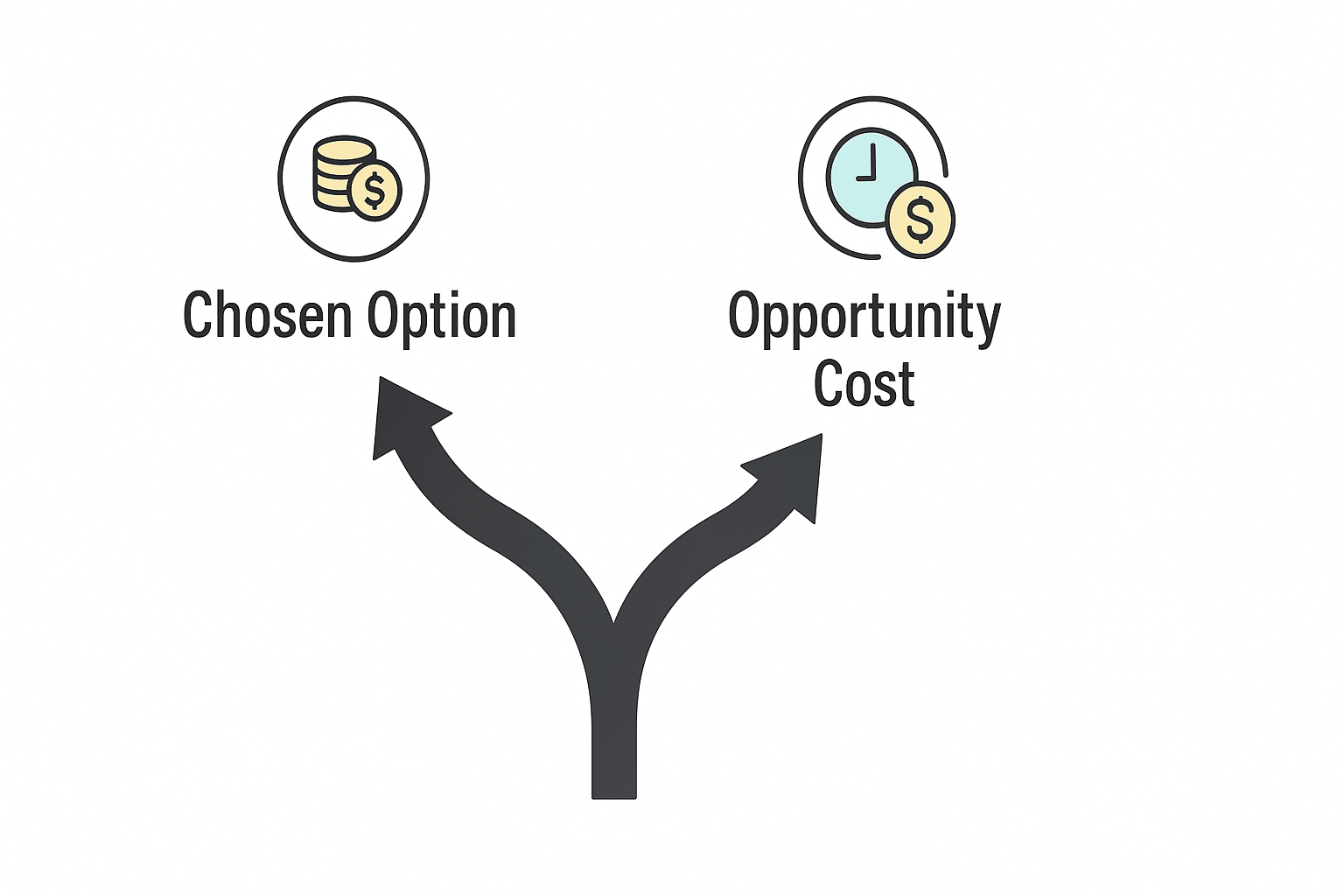Opportunity cost is the potential benefit that is lost when one option is chosen over the next best alternative. Every decision—whether in business, investing, or daily life—requires trade-offs. Because resources such as money, time, and skills are limited, choosing one option always means giving up the benefits of another. Opportunity cost makes these trade-offs visible and helps decision-makers evaluate the real value of their choices.
Why Opportunity Cost Is Important
Understanding opportunity cost is essential for making better financial and strategic decisions. It ensures that the hidden price of choosing one option is not ignored. Businesses, investors, and individuals rely on this concept because it:
- Improves decision-making: Forces comparison of all alternatives, not just the chosen one.
- Reveals trade-offs: Shows what must be sacrificed when resources are committed to one option.
- Guides resource allocation: Helps direct limited time, money, and effort to the highest-value uses.
- Prevents hidden losses: Makes sure forgone opportunities are considered before committing to a path.
Types of Opportunity Cost
- Explicit opportunity costs: Direct, measurable trade-offs such as financial returns on two competing investments.
- Implicit opportunity costs: Indirect or intangible sacrifices, including time, convenience, experience, or personal satisfaction.
Examples in Real Life
1. Investing: An investor who puts $20,000 into a bond yielding 3% faces the opportunity cost of not investing in stocks that could return 8%.
2. Business decisions: A company that spends its budget on opening a new store may sacrifice the potential profits that a digital marketing campaign could have generated.
3. Personal choices: A student who decides to attend graduate school full-time gives up the salary they could have earned by working during those years.
4. Time management: Choosing to spend three hours watching television means losing the opportunity to study, exercise, or build a side project during that time.
Opportunity Cost in Business Strategy
In business, opportunity cost is often used to compare projects, investments, and pricing strategies. Managers evaluate not only the costs and revenues of the chosen plan but also the missed profits from the alternatives. For example, when launching a new product, the opportunity cost may include the lost potential of enhancing an existing product or entering a different market. By weighing these trade-offs, companies can pursue strategies that maximize long-term growth.
Common Misconceptions
- It is not limited to financial costs—time and satisfaction are equally important.
- It is not always easy to measure in exact numbers, but estimating it still improves decision quality.
- People often underestimate it because the alternative outcome is not visible or immediate.
Key Takeaway
Every choice has a cost beyond the money spent. By recognizing opportunity cost, individuals and businesses make smarter decisions, use resources more effectively, and avoid the hidden consequences of ignoring alternatives.
For further reading, see Opportunity Cost on Investopedia.

